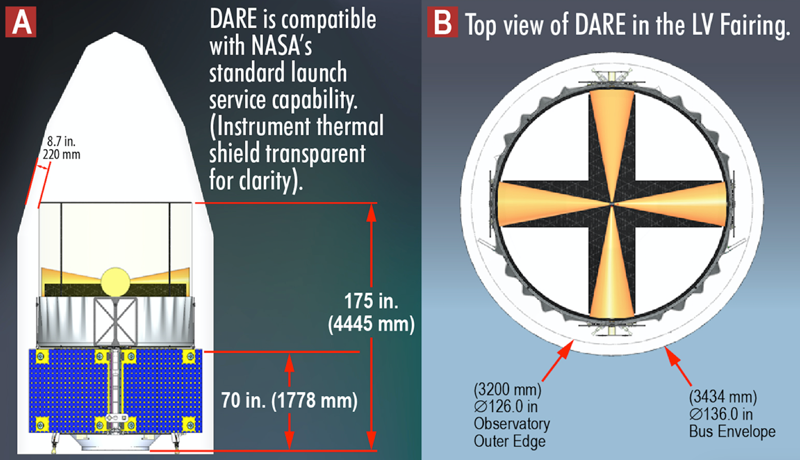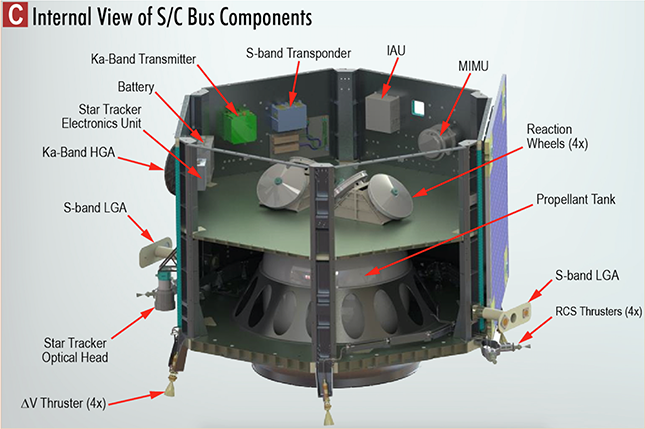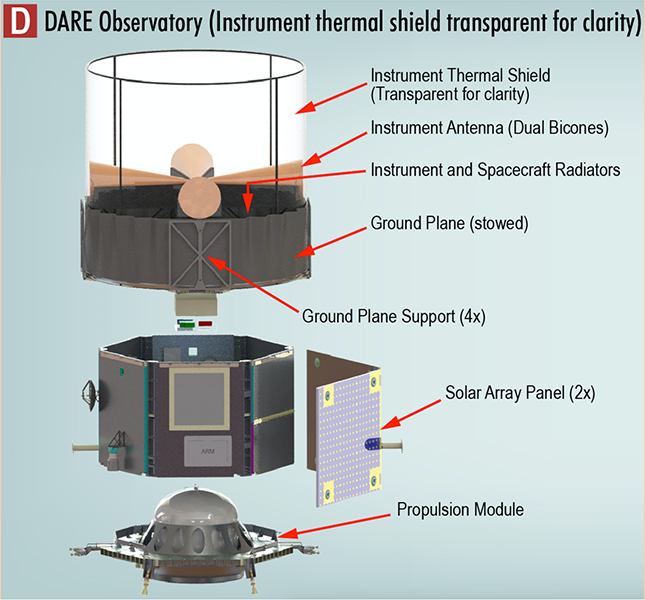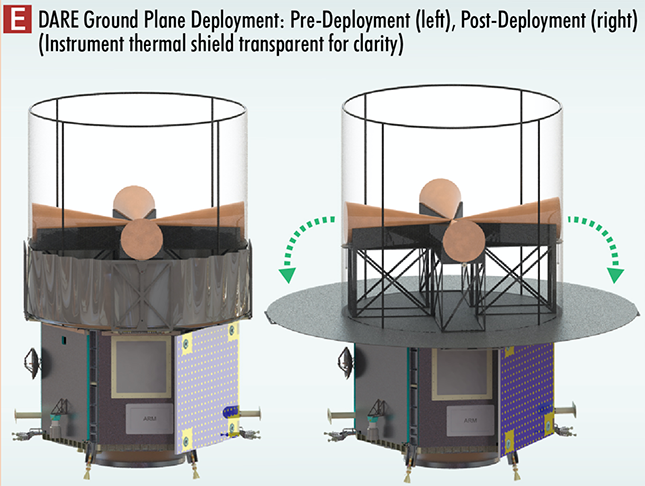DARE uses a single-string architecture with high-heritage, high-reliability components across the design, and redundancy in critical areas to minimize risk. RF-quiet features are a critical aspect of DARE’s design, providing shielding >50 dB better than MIL-STD-461F across 40-120 MHz.

The DARE spacecraft bus benefits from substantial heritage from the successful on-orbit USAF STPSat-2 and STPSat-3 missions and NASA’s Green Propellant Infusion Mission (GPIM) spacecraft, currently in storage after successful completion of System I&T. The spacecraft bus provides support for the instrument, solar array, and propulsion module. There are no bus deployables, which maximizes reliability. The primary bus structure is a bolted construction using an aluminum facesheet, with aluminum honeycomb sandwich panel construction used on many Ball spacecraft including WISE, Kepler, Orbital Express, and the WorldView spacecraft. Due to the strict RFI requirements, panels are sealed with a two-step lid using RF gaskets at bolted interfaces, and instruments components are housed inside an additional faraday cage based on a machined aluminum BCP 100 structure, also with RF gaskets.

The solar array comprises two rigid panels with a combined area of 5.0 m^2, hard mounted to the side of the bus and populated with 3.9 m^2 of solar cells. The solar array is sized to support 31% load growth at end of life and predicted operating temperature. All mission phases have been analyzed to ensure proper power balance, including time spent in phasing orbits, science collection, downlink, and eclipse. Total load, eclipse period, and sun period were calculated for each phase to determine battery and solar array sizes. A single Li-Ion battery supports loads for all operations. The duration of the total lunar eclipse is the driving case for battery sizing. The four lunar eclipses over the mission life result in a deeper than usual battery discharge.

The DARE attitude determination & control system is a low-risk, high-heritage design that meets pointing and navigation performance requirements with ample margin using flight-proven hardware and control algorithms from GPIM, WISE, Kepler, and Deep Impact. The design features include (i) stellar-inertial, 3-axis stabilized attitude control, (ii) EMI-quiet gyro-propagated attitude during science data collection, (iii) robust fault management for critical events, and (iv) ΔV maneuvers using Ball’s flight-proven approach.
The DARE propulsion system design is a simple, modular, blow-down monopropellant architecture. Ball’s extensive experience with monopropellant systems over 12 missions in the last 15 years ensures a robust design, low technical risk, and high reliability.
DARE uses a flight-proven S-band transponder for command and telemetry and a wide-band Ka-band transmitter developed for the TESS mission for science data downlink. Both units have been compatibility tested against the NASA Near Earth Network and Deep Space Network.
The DARE command and data handling system has significant Ball heritage as well as lunar heritage from the recently successful LADEE mission. DARE is Ball’s 4th application of this architecture, which is based on a lightweight high-performance single-string integrated avionics unit, used on USAF STPSat-2 and STPSat-3, and NASA GPIM.


Interested in learning more about the DARE spacecraft?
Find more specs on the DARE spacecraft foldout